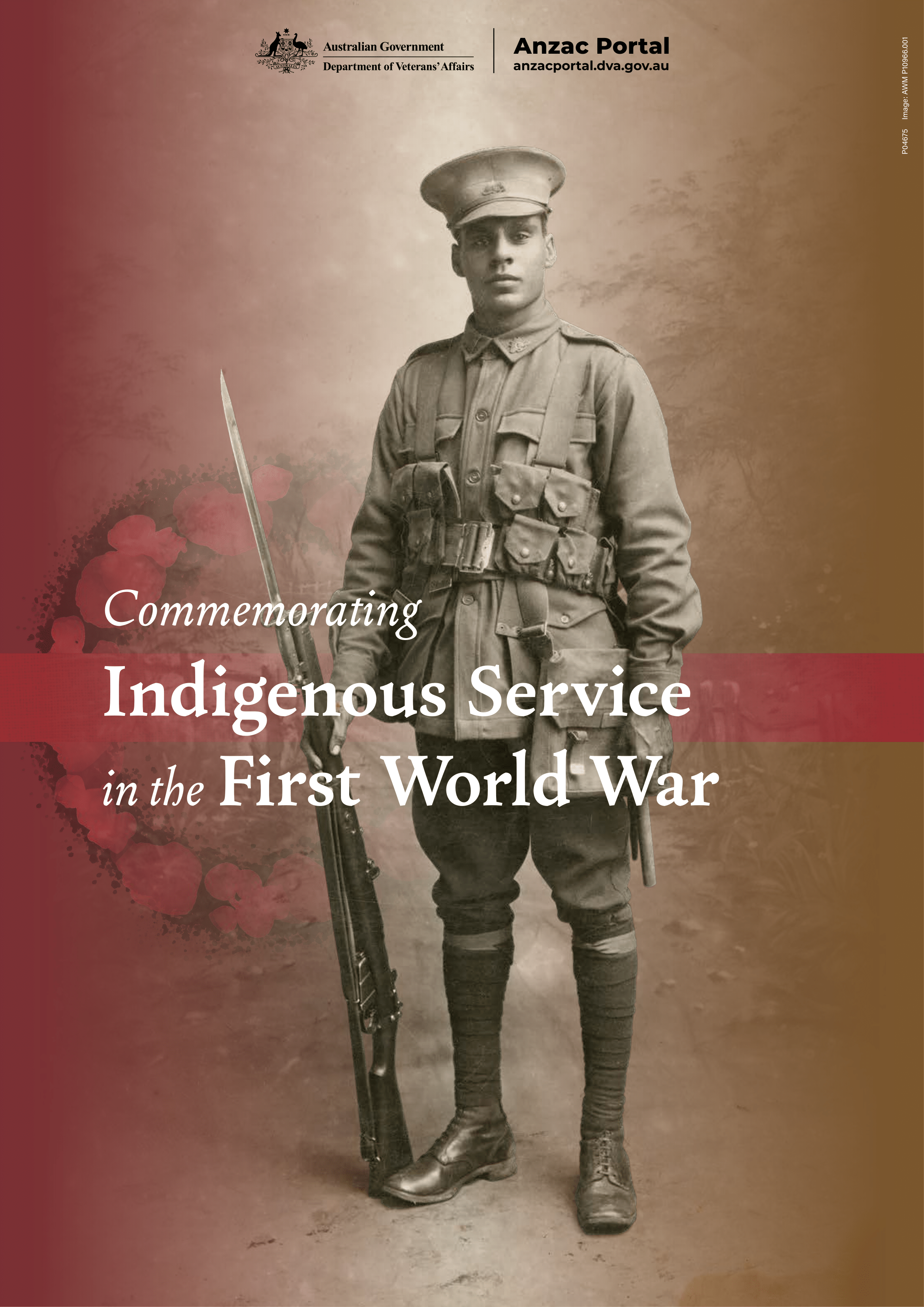Aboriginal and Torres Strait Islander people are advised that this post contains the name and image of a deceased person.
This week is NAIDOC Week – an opportunity to celebrate and recognise the history, culture and achievements of Aboriginal and Torres Strait Islander peoples. It’s a chance for all Australians to learn about First Nations cultures and histories and participate in celebrations of the oldest, continuous living cultures on earth. The theme this year is The Next Generation: Strength, Vision & Legacy.
It’s also an opportunity to remember First Nations men and women who have served or are serving in Australia’s armed forces.
One such was Corporal Frederick Prentice who served in the First World War and was awarded the Military Medal for his actions on 19 July 1916 at Pozières, France.
Frederick Prentice was born in 1894 at Powell Creek, 800 kilometres south-east of Darwin. His biological father, Alfred Leslie Prentice, was a Justice of the Peace in the town at the time of Frederick’s birth. His biological mother was an unidentified Jingili Aboriginal woman from the Elliot/Newcastle Waters area of the Northern Territory. In 1896, Frederick was placed into the care of Walter (Dan) Kell, a station master at the Powell Creek Overland Telegraph Station, and his wife Isabella, a nurse at a Palmerston hospital.
He spent part of his childhood at the Telegraph Station until 1905, when he relocated to South Australia with the Kell family. Frederick and his adopted sister Isabella attended Kyre College (later known as Scotch College), where he excelled at sports and music. Once he finished school, he began his working life as a station hand at Manunda Station in South Australia.
During the First World War, Frederick, now aged 21, was set on joining the Australian Imperial Force (AIF) to serve his country. However, Australia’s Defence Act at the time prohibited ‘men not of substantial European origin’ from serving. Undeterred, Frederick enlisted on 7 May 1915.
On 26 August 1915, Frederick’s unit embarked for Egypt from Adelaide. He joined the 1st Pioneer Battalion, part of the 1st Australian Division that fought on the Western Front. Starting in July 1916, Frederick took part in the fighting around Mouquet Farm during the Battle of Pozieres. According to official records he ‘showed great courage, resource and ability in bringing machine guns and ammunition through the enemy barrage in the dark and across broken ground’, which led to him being awarded the Military Medal for his actions at Mouquet Farm.
It was one of the few decorations awarded to Indigenous soldiers during the war. After receiving this honour in 1916, Frederick decided to send his medal home to his family in Australia. Unfortunately, SS Mongolia, the ship carrying the mail, was sunk by the enemy. A replacement was later issued.
Frederick’s battalion saw further action in 1917 including at Bullecourt, Ypres, Polygon Wood and Passchendaele. That year, Frederick was promoted to Lance Corporal. He was promoted again to Corporal on 31 January 1918 and took part in the final battles of the war. He returned to Australia, arriving in May 1919.
After his discharge, Frederick engaged in various jobs. In the 1930s, he headed to Western Australia to work in the goldfields and mines, remaining there until the 1950s. He eventually drifted back to his ancestral home in the Northern Territory. Frederick died from a heart attack alone by a campfire in November 1957, only three weeks after arriving in Katherine. He was not well-known in the area and only one local man knew of his service during the war.
Frederick died from a heart attack alone by campfire, weeks after arriving in Katherine. The police had information that the man was half Māori, but the superintendent used the knowledge provided by the local man to contact the Department of Defence and they were able to identify Frederick. The police attempted to contact his next of kin via AIF records, but none were found. Frederick had lost connection with his former life and family while rebuilding his post-war life. In 1957, Frederick was buried in an unmarked grave.
In 1991, after a family reunion, descendants of the Kells began researching information about the two Aboriginal children who were adopted by Isabella. They uncovered the story of Frederick’s war service and death. In 2013, Katherine Stolen Generations members Ellen Gough and Juanita Kruger had also begun campaigning to have a headstone erected at his gravesite. His memory had not been lost.
The reissued Military Medal that he had lost during his time working in WA was found by a fossicker in 2016. The decoration is now on display at the Australian War Memorial in Canberra.
The research and campaigning of many to piece together this war hero’s story over the years led to a momentous occasion in Katherine in 2021. Some 105 years after his bravery on the Western Front, Corporal Frederick Prentice was commemorated and his grave marked with a headstone and plaque. He finally received the recognition he deserved. The plaque records his name, rank, unit, and the postnominal letters MM (for Military Medal). His epitaph reads: ‘An Aboriginal soldier of the Great War remembered and honoured.’
His story lives on. Lest we forget.
In March 2024, DVA began a series of posters to commemorate Indigenous service. The first poster features (then Private) Frederick Prentice.
More information
